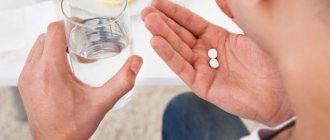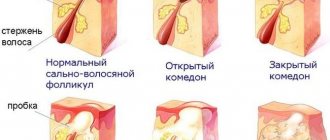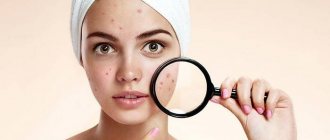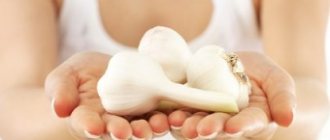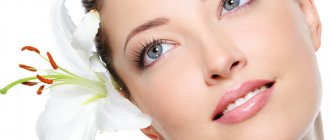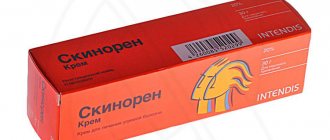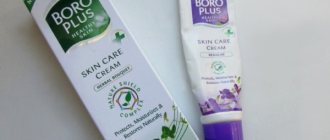Very often, acne progresses to a more severe stage, since the main drugs that fight this disease simply cannot cope. In these cases, antibiotics must be added to them.
Modern medicine offers a large number of such drugs, but the most effective in this area is Erythromycin, characterized by antibacterial, anti-inflammatory and antiseptic properties.
It is this medication, which is indispensable in the fight against acne, that will be discussed in the article.
Description of the drug, its composition and release forms
Erythromycin is an antibacterial and anti-inflammatory agent that is effective in destroying pathogens that cause infectious skin diseases.
On pharmacy shelves, Erythromycin for acne can be seen in such forms as:
- Ointment - available in aluminum tubes of 3, 7, 10 or 15 g. The consistency is dense and the color is white. Contains 10 thousand units of active substance per 1 g, in addition, it has auxiliary components in the form of petroleum jelly, lanolin and synthetic sodium derivatives;
- Round, biconvex tablets , enteric-coated - are available in the form of plates of 10 or 20 pieces, with a concentration of the active substance of 100, 200 or 500 mg per 1 tablet. White color. Auxiliary components include povidone and crospovidone, castor oil, titanium dioxide, calcium stearate, cellacephate, potato starch and talc;
- Powder for preparing a solution (lyophilisate) - presented in the form of a porous, hygroscopic, odorless white mass. Sold in bottles, V = 100 and 200 ml.
All forms of Erythromycin perfectly destroy:
- Propinobacteria that live in human skin. These microorganisms are the main culprits in the development of acne and the appearance of pimples, although in small quantities, on the contrary, they very actively fight various microbes;
- Gram-positive microorganisms - staphylococci and streptococci;
- Gram-negative pathogens - mycoplasmas, chlamydia, treponema.
They have pharmacokinetic properties such as:
- High level of absorption , independent of food consumption, therefore maximum accumulation in the blood is observed within 3 hours after consumption;
- To a greater extent (48%) Erythromycin is concentrated in organs such as the liver, spleen, kidneys , as well as in bile and urine. In addition, it can appear in the cerebrospinal fluid, placenta and fetal blood, and in inflammatory processes of the meninges - in brain tissue.
Erythromycin for acne should be taken strictly under the supervision of a doctor.
Indications for use
Erythromycin is used to treat diseases that develop in different areas of the skin under the influence of pathogenic microorganisms.
For example, ointment is used in therapy:
- infectious skin diseases;
- trophic and purulent ulcers;
- wounds from first degree burns;
- acne, comedones, inflamed pimples and pustules on the face.
Tablets have the same indications for use, but are used when these diseases become more severe.
They are necessary in treatment:
- severe bacterial infections in which the pathogen is resistant to other antibiotics;
- complicated purulent lesions of the epidermis, such as furunculosis, empetigo, eczema;
- bedsores, both superficial and deep;
- burns of II-IV degree of various influences;
- acne in the form of papules, pustules and nodules, located not only on the face, but also on the shoulders, back, and arms.
And this is not a complete list of diseases that Erythromycin will help to cope with.
Erythromycin, acne tablets: application?
Erythromycin is a prescription drug that some doctors use to treat acne. It is known as a macrolide antibiotic, which means it falls under a different class of drugs than tetracycline antibiotics, which are also commonly used to treat acne.
Like other types of antibiotics, erythromycin is not specifically for acne. It is considered a narrow-spectrum antibiotic that is used to treat a variety of skin conditions, including acne.
Erythromycin is often combined with benzoyl peroxide in topical preparations (eg, benzamycin). Topical erythromycin is often combined with additional treatments (eg, oral antibiotics, retinoids, hormonal treatments, etc.) as part of a comprehensive acne treatment plan.
Erythromycin works similarly to penicillin, so doctors can prescribe it for almost any type of bacterial infection that needs treatment. As is often the case with antibiotics, erythromycin can be prescribed for both serious illnesses and less serious illnesses. One of the most common prescriptions is erythromycin for acne.
The principle of action of Erythromycin on acne and its beneficial properties for the skin
The healing properties due to the presence of erythromycin phosphate contribute to the fact that Erythromycin inhibits protein synthesis in pathogenic microorganisms and destroys them.
At the same time, the drug does not cause any harm to the human body, and even, on the contrary, has a beneficial effect on the skin. In its various forms, this effect occurs definitely, therefore, for each degree of acne, a different type of Erythromycin is prescribed.
For mild cases of the disease, an ointment is mainly used, which is very gentle on the skin, but removes acne quite quickly.
Its use leads to the following:
- Large pimples begin to decrease in size due to the destruction of the causative agents of the disease;
- foci of inflammation calm down and bacteria cease their activity;
- the skin is cleansed due to deep penetration into the layers of the epidermis;
- Residual dark spots after acne are eliminated.
In severe stages of acne, Erythromycin is used in tablet form.
From which the following positive phenomena for the epidermis are observed:
- pimples disappear very quickly;
- the acne itself begins to decrease in size;
- The area of damage to the skin is reduced, it becomes clean without any scars or scars.
For therapy, the product is taken orally or with its addition, special mash is prepared, which is used to wipe acne and skin before bed.
Using Erythromycin Tablets for Acne
Poll: When did your acne appear? (Number of votes: 4295)
I've been suffering all my life
It's been a couple of years now
About a few months
Recently
To vote, click on the desired answer. results
Erythromycin kills and slows the growth of acne-causing bacteria Unlike many other antibiotics for acne, erythromycin can be provided in either oral (tablet) or topical (ointment or cream) form Both can be used in parallel or separately to reduce bacterial buildup for acne.
In 1987, researchers compared the difference between tetracycline (the most common type of antibiotic to treat acne) and erythromycin. They found that both people had similar effects on acne, with approximately 80 - 90% reporting a significant reduction in acne accumulation within the first 3 months of the study.
Most studies comparing these two treatment options reported that acne and erythromycin had about the same effect on tetracycline in almost every case. The differences were largely insignificant between the two drugs.
Similar benefits were found in the topical erythromycin group A study conducted on a group of 253 patients found that those using topical erythromycin found a significant reduction in the number of acne lesions compared to those using other acne clearing methods.
However, some researchers believe that the effect of topical erythromycin on acne is different from oral erythromycin. In one study, the researchers claim that this effect is more of an anti-inflammatory effect rather than leading to a reduction in bacteria. Essentially, erythromycin does not kill bacteria, but rather prevents the bacteria from creating skin lesions.
Despite this, research has been fairly consistent in showing that erythromycin is a good choice for clearing acne.
In what cases do antibiotics only worsen the condition of the skin and cause new acne to appear?
Preparatory procedures before external use of the drug
In order for the therapeutic effect in the fight against acne to manifest itself 100%, it is necessary:
- Initially cleanse the skin. To do this, you need to wash your face with warm water and use a moisturizer;
- Then it is necessary to dry the face with a towel or napkin;
- Treat the rash with a solution of hydrogen peroxide pointwise or with a cotton pad if there is a large area of damage.
- It is also recommended to do a test to identify allergies to the components of the medicine. To do this, apply a small amount of the product to the area of skin on the elbow. If no reaction appears after 30 minutes, it is used for treatment.
Does erythromycin ointment help with acne?
The pharmaceutical drug in question has been used for decades to treat acne and rashes. The ointment contains a potent antibiotic, erythromycin. It suppresses the activity of pathogenic bacteria that provoke the appearance of new acne.
The surface of human skin is home to a huge number of microorganisms that protect the epidermis from infections. Sometimes this microflora penetrates the structure of the sebaceous glands, disrupting the intensity of sebum production, resulting in inflammation and acne.
With the help of erythromycin ointment, you can not only restore the natural microflora, but also get rid of acne. The minimum concentration of the active substance eliminates overdose, as well as adverse reactions to the antibiotic from the body.
How to properly use Erythromycin to fight acne?
To obtain the greatest effect from the medicine, which causes the disappearance of acne on the skin, you must follow the rules for taking it, the correct dosage and course.
It is best to consult an experienced dermatologist, since therapy depends on the severity of the disease and the individual characteristics of the patients. It should be remembered that for each form of antibiotic these regimens and methods of use will be different.
Use of Erythromycin in the form of ointment
Acne therapy is carried out as follows:
- The ointment is applied pointwise or to small inflamed or purulent pimples. The antibiotic layer when applied should be thin;
- The procedure is performed 3 times a day , for a course of no more than 1-2 months, since the microbial flora can quite quickly develop resistance to the active component, so longer use of it will be useless and may even cause side effects.
The use of antibiotics in tablet form
As mentioned above, the tablet form of this antibiotic is used for severe acne, and the best result from therapy will be observed when it is used in combination with substances intended for external treatment of the affected areas.
In most cases, the following antibiotic regimen is prescribed:
- daily dosage is not higher than 4 g;
- it can be taken once or divided into several doses;
- the time interval between them should not be less than 6 hours;
- The drug should be taken 1 hour before meals;
- can be used 3 hours after it;
- its duration can vary from 2 weeks to several months.
In addition to products for the external treatment of damaged skin, the medicinal complex with this antibiotic may also include products that support the body’s immunity and probiotics, since its use disrupts the intestinal microflora.
Erythromycin-based talkers
Erythromycin-based talkers are products for external treatment of acne-affected skin, which are often prescribed by dermatologists in conjunction with tablets.
The most popular are:
- Vodka mash - to obtain it you need to mix 10 crushed antibiotic tablets with 100 ml. quality vodka;
- Anti-acne mash - 100 ml. the solution obtained by mixing the same volume of salicylic alcohol and boric acid must be added with 4 g of crushed antibiotic and zinc oxide tablets.
These products are not recommended for use if you have dry skin, as the alcohol components contained in the talkers can dry it out even more.
Talkers are used, adhering to the following algorithm:
- The resulting mixture is thoroughly shaken and these steps are repeated before each use;
- The procedure is performed before bedtime , since the components of the medicinal solution have the ability to increase the sensitivity of the epidermis to ultraviolet radiation;
- After preliminary cleaning of the skin, using a clean cotton swab, the inflamed areas are wiped, and this is done with circular massage movements for faster penetration of the composition inside;
- You can wipe the entire face with the exception of the lip and eye areas;
- After using the talkers, moisturizing the skin with cream is required to avoid peeling of the skin.
The duration of the treatment course is no more than 1 month, since pathogens develop an addiction to the components of the product. However, it can be repeated if necessary after a 2 week rest.
General Benefits of Erythromycin for Acne
Using erythromycin for acne may be extremely beneficial, at least compared to other antibiotics. While gastrointestinal side effects appear to be more common, the risk of a serious side effect is lower, and the drug appears to be well tolerated.
As usual, erythromycin may not clear up every type of acne or acne burst. It also does not clear up acne scars, so those with severe acne should expect some of their acne to remain. Plus, the risk of resistance is quite strong, so it's unlikely that you You will need to switch to a different type of antibiotic if the bacteria stop responding to erythromycin.
However, the use of erythromycin for acne has been a common practice for many years, and many doctors still recommend the antibiotic for those experiencing mild, moderate, or severe acne.
Acne occurs when dirt, oil, and bacteria clog pores in the skin. This causes whiteheads, pimples, or cysts to form. Some cases of acne require antibiotic treatment to kill bacteria and reduce the appearance of acne spots. Discuss the benefits and risks of taking erythromycin tablets with your doctor. determine whether it will improve your skin condition or whether its use on your face type and acne is not advisable.
Use of Erythromycin for acne marks
With the combined use of a tablet form of an antibiotic and an ointment, the body is cleansed, due to which all the spots and scars left after acne and acne disappear.
In order to speed up the process of getting rid of acne marks, you can use a product prepared at home from Erythromycin and clay.
To do this you will need:
- 50 – 70 g white clay;
- 4 Erythromycin tablets, crushed into powder;
- An aqueous solution of Dimexide, diluted in a ratio of 1:10.
Recipe for preparing and using the mask:
- Dilute clay and Erythromycin with Dimexide solution to a paste;
- Apply to spots or on a small surface against acne marks for 20 minutes;
- Rinse with warm water, apply a moisturizer around the rash;
- The course of application is one month, but no more than twice a week
Use during pregnancy and lactation
During pregnancy, taking a tablet form of the antibiotic is not recommended.
This is due to its pharmacokinetic properties, namely:
- Easily penetrates the placental barrier and has a detrimental effect on fetal development;
- Accumulate in breast milk, causing allergic reactions in the baby.
Nursing mothers are prescribed Erythromycin tablets in cases where, in addition to skin diseases, there are also other infectious diseases that cannot be treated with other types of antibiotics.
Therapy is carried out strictly under the supervision of a doctor, and the child should be transferred to artificial feeding.
The ointment does not have such a negative effect on the fetus and infants, so it is often used by women during such periods.
Use in childhood
For children, an antibiotic is prescribed for the presence of infant pimples and teenage acne, as well as various skin rashes that are infectious in nature.
In the first case, ointment and suspension are used.
And secondly, tablets that have the following daily dosage regimen:
- Children 3-6 years old – 100-125 mg;
- Children 6-8 years old – 150-175 mg;
- Children 8-12 years old - 250 mg.
To take the antibiotic correctly, the indicated dosage should be divided by 4 times. Course – 1-2 weeks.
Special instructions and recommendations for the use of Erythromycin
Before starting to take various forms of the drug, it is mandatory to study the section of the instructions that tells about the features of their use.
This is necessary so that you can get the maximum healing effect and avoid the development of any negative consequences.
The ointment has the following features:
- In cases of complex use of Erythromycin with substances having similar properties, a time interval between applications to the skin of at least 1-2 hours must be observed;
- If there are no changes for the better during therapy , which has already lasted 3-4 weeks, it is necessary to contact a dermatologist;
- During treatment for acne and pustular rashes, it is not recommended to use abrasive or highly active chemicals in the form of scrubs and peels to cleanse the skin, as this can lead to severe irritation and inflammation of the epidermis.
As for the tablet form of Erythromycin, when taking them you need to pay attention to the following specifics:
- or fermented milk products for washing down
- Avoid foods that can increase acidity in the stomach , such as citrus fruits, coffee, sour fruits, fried and spicy foods, and smoked foods. These restrictions are due to the fact that an excessively acidic environment in the stomach reduces the effectiveness of the drug;
- during treatment of the disease also causes consequences
- With long-term use of Erythromycin, special monitoring of liver function is required, especially in elderly patients, as cholestatic jaundice may develop.
All forms of the drug do not affect concentration, so they can be safely used before driving any vehicle.
Resistant acne and erythromycin
One of the common problems encountered when using erythromycin for acne is bacterial resistance.
This problem is inherent in all types of antibiotics, and erythromycin is no exception. This is what causes concern when taking erythromycin for acne.
Bacteria Can Adapt When taking erythromycin, there is a high chance that drug-resistant bacteria will develop over time. Although this is not as dangerous, it does mean that at any point during your treatment, erythromycin may stop working and a new treatment will be required.
Additionally, in very rare cases, it can lead to more serious problems of drug-resistant bacteria for other conditions. Because of this, no antibiotic should be taken without a prescription, and it is best to make sure you have exhausted all non-drug options before trying any one. or an acne antibiotic, including erythromycin.
To reduce the likelihood of this resistance, it is extremely important to take the drug at the same time each day. Failure to take the drug as prescribed (for an extended period of time as required by the prescription) will increase the likelihood of developing resistance.
Additionally, there is some evidence that combining erythromycin with benzoyl peroxide will also reduce the risk of developing resistance. Research at the University of Leeds in the UK has shown that combining these two acne treatments may improve the ability to use erythromycin in the long term.
Contraindications
Like any medicine, Erythromycin has contraindications for use.
The substance in tablets is not recommended for use:
- Patients with hypersensitivity to the components of the drug;
- People with hearing loss;
- Pregnant women;
- Children under 3 years old.
- In addition, people with arrhythmia, jaundice, renal and liver failure, as well as nursing mothers should take these tablets with great caution.
- Erythromycin ointment for acne should not be taken by people with individual intolerance to the components.
Instructions for use
In accordance with the official instructions, erythromycin ointment is applied to a previously cleaned and antiseptic-treated rash. The product is evenly distributed in a thin layer over the entire affected area.
- The frequency of treatment is determined only by the doctor after examining the patient.
- For acne treatment, it is optimal to lubricate problem areas 1-2 times a day.
- The medicine is applied in the evening and in the morning.
- Application of medication applications is allowed for severe pathologies and large-area lesions.
Dermatologists do not recommend rubbing a pharmaceutical product into the epithelial layer, because There is a high risk of skin irritation. The maximum duration of therapy is 21 days. With prolonged use, addiction to the antibiotic occurs, and its medicinal properties are leveled out.
Indications and contraindications
Before starting treatment, it is important to undergo an examination by a specialist. The success of therapy largely depends on the accuracy of the diagnosis. The use of ointment is indicated for the following dermatological ailments:
- purulent rash accompanied by painful symptoms;
- trophic ulcerative skin lesions;
- treatment of white and black spots;
- purulent conjunctivitis (optional);
- age-related rash that occurs due to hormonal imbalance;
- infectious skin lesions.
Since we are talking about a pharmaceutical product with high activity against pathogenic microflora, it is prescribed by a doctor. Otherwise, antibiotic therapy may cause side effects.
Contraindications to the use of liniment:
- hypersensitivity of the body to the composition of the drug;
- Pregnant and breastfeeding women are prohibited from using the medication;
- liver pathology or dysfunction.
In each of these cases, patients are prescribed safer and more specialized drugs.
Directions for use and doses
According to the official instructions for use, erythromycin ointment for acne is used only externally.
- Purulent dermatitis (including skin infections) - apply the cream to problem areas of the body 2 times a day. Average dosage – 0.5 – 2 g.
- Eye diseases - ointment is applied to the lower eyelid up to 3 times a day, 2-3 mg.
- Anti-burn therapy - applications 2-3 times every 7 days.
- Early stage of syphilis or gonorrhea - ointment-soaked tampons are administered orally once every 6 hours.
These recommendations are adjusted individually for each patient. The duration of therapy is determined by a dermatologist, ophthalmologist, therapist or gynecologist.
Side effects and special instructions
With dosed use of erythromycin ointment for acne on the face, the likelihood of side effects is minimal. If you use liniment for more than 21 days, possible complications and unwanted reactions:
- weakening of the immune system;
- relapse of the underlying disease;
- hyperemia in the treatment area.
In rare cases, skin rash and itching are observed. The listed reactions occur without any intervention on the part of the patient.
Directions for use:
- before application, it is important to ensure that there are no adverse reactions;
- it is necessary to completely eliminate contact of the medicine with the mucous membranes of the eyes;
- The maximum duration of treatment is 3 weeks, after which infections develop resistance to the antibiotic.
The drug is distributed absolutely freely, without prescriptions from a doctor, but it must be used with extreme caution.
Side effects
If the dosage is violated or the course of taking Erythromycin is too long, side effects may occur.
Which appear as:
- allergic reactions;
- hives;
- anaphylactic shock;
- diarrhea;
- nausea;
- vomiting;
- stomach upsets;
- oral candidiasis;
- jaundice;
- pancreatitis;
- hearing loss and tinnitus;
- tachycardia;
- ventricular arrhythmia.
In addition, the powder form of the drug may cause convulsions and phlebitis at the injection sites.
pharmachologic effect
Erythromycin included in the drug is a macrolide antibiotic. This is what determines the bacteriostatic effect of the drug. In addition, it is capable of exerting a bactericidal effect on a wide group of gram-positive organisms.
At the same time, most gram-negative bacteria, mycobacteria, viruses, and fungi are resistant to the drug.
Erythromycin is much better tolerated than penicillins, so it is prescribed for allergic reactions to the latter.
Possibility of overdose
Overdose with this drug occurs quite rarely and mainly when using powder and tablet forms.
To eliminate negative consequences they are required to:
- drink absorbents in the form of activated carbon;
- monitor the state of the respiratory system, acid-base status and electrolyte metabolism;
- do an electrocardiogram;
- if the dose is exceeded 5 times, gastric lavage is necessary.
Cases of overdose from Erythromycin ointment have not been established.
Interaction and incompatibility with other drugs
Each form of Erythromycin has its own characteristics when interacting with other drugs.
For example, Erythromycin in the form of ointment:
- cannot be combined with drugs such as Lincomycin, Clindamycin, Chloramphenicol and beta-lactam antibiotics, as they are antagonists;
- reduces the bactericidal effect of antimicrobial substances of the penicillin, cephalosporin and carbopenem groups, but enhances the effect of hormonal agents for external use;
- Sharing with external pharmaceutical products that cause peeling is prohibited.
Tablets are also prohibited from being taken with the same antagonist drugs as the ointment.
They interact with other drugs as follows:
- Theophylline, Carbamazepine, Phenytoin, Bromocriptine can increase concentrations, thereby increasing nephrotoxicity;
- increase the concentration of Cyclosporine and reduce the clearance of Midazolams;
- increase the effects of benzodiazepines and the bioavailability of Digoxin;
- cause arrhythmia when taken in combination with Terfenadine and Asetmizole and vasoconstriction when taken with Dihydroergotamine.
In addition, the tablet form of the drug can reduce hormonal contraceptives and slow down the elimination of coumarin anticoagulants.
Acne products based on Erythromycin
Many ointments, creams and lotions, which also contain the active substance erythromycin, help fight acne.
The most famous are:
- Aknemycin - cost from 1600 rubles ;
- Benzamicin - cost from 800 rubles ;
- Zenerite - cost from 500 rubles .
Aknemycin Benzamycin Zinerit
Such drugs are also quite effective, since in addition to erythromycin they contain substances such as tertinoin, benzoyl peroxide, and zinc acetate.
Types of Erythromycin
Erythromycin has topical and oral forms to kill bacteria Applied directly to the skin, the topical version of the drug can be provided as a gel, solution, ointment, lotion, pads, and smears Oral erythromycin also comes in several forms, including tablets, long-acting tablets, capsules, capsules long-acting, liquid and chewable tablets.
Erythromycin ointment for acne, instructions and effect of use!
Your doctor will determine which combination will most effectively treat your acne. Some topical medications contain a combination of erythromycin and benzoyl peroxide, which prevents clogged pores by removing dead skin cells. Benzoyl peroxide also kills bacteria, preventing inflammation that leads to acne.
Possible analogues
Erythromycin has direct and indirect analogue drugs.
The first group includes drugs with erythromycin phosphate as an active component:
- Ilozon - country of origin - USA, cost from 100 rubles ;
- Altrocin is an Indian remedy that costs from 180 rubles .
Ilozon Altrocin
The second group includes drugs that exhibit similar effects to Erythromycin:
- Sumamed is the main component of azithromycin dihydrate, cost from 450 rubles ;
- Macropen - active substance midecamycin, cost from 200 rubles ;
- Clindovit is the main component of clindamycin phosphate, cost from 300 rubles .
Sumamed Macropen Klindovit
